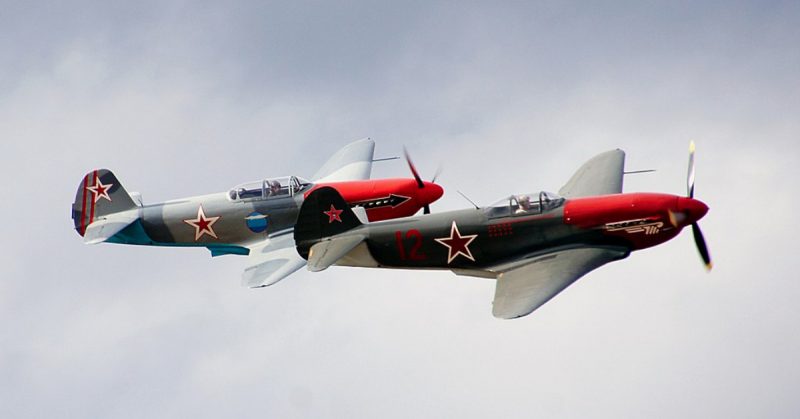When we talk about Soviet military vehicles of the Second World War, the focus is usually on tank production. But while that’s where the Soviets made the biggest mark, they also produced a wide range of fighter planes in defense of the motherland.
Lavochkin LaGG-3
Built almost entirely out of wood, the LaGG-3 was a stopgap plane, developed and put into action while Lavochkin worked on more advanced models.
It compared poorly with the Axis fighters that it faced, being outclassed by Messerschmitt Bf109s, Focke-Wulf 190s, and Macchi C.202s, but it became the basis for a far more effective plane.
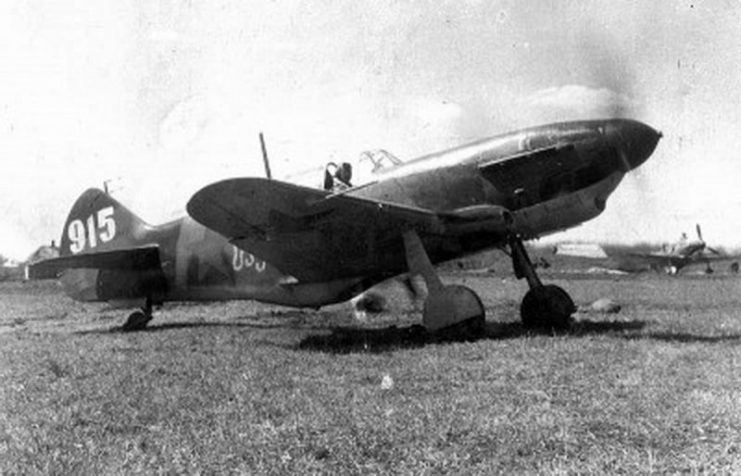
Lavochkin La-5
The La-5 took the fundamentally sound airframe of the LaGG-3 and turned it into something better. The in-line V-12 engine was replaced by a Shvestov M-82 14-cylinder radial model.
With a supercharger and a top speed of 403mph (over 648 kph), it was a huge step up from what had come before. Maneuverable, fast, and responsive, it out-flew anything else the Soviets had, as well as most of the opposition.
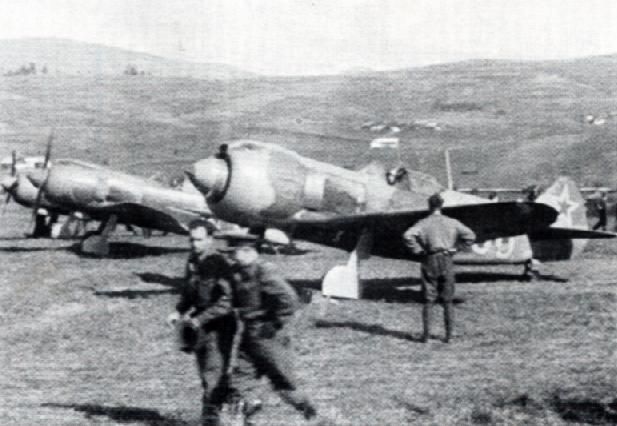
The La-5 retained the wooden body of its predecessor, to save on scarce materials needed for other weapons and vehicles. After taking flight in 1942, it continued to be refined as engineers used aerodynamics and weight savings to improve the plane’s performance.
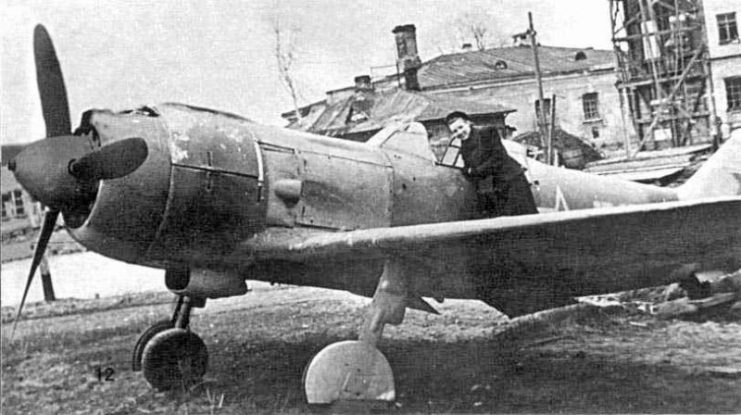
Carrying 20mm cannons, the La-5 had the firepower to punch through opposing armor and self-sealing fuel tanks. The wooden frame might be vulnerable, but so were enemies faced with its guns.
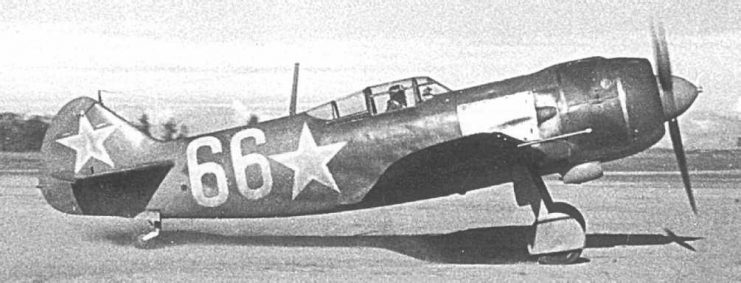
Mikoyan-Gurevich MiG-3
The third in a series of fighters designed by Artem Mikoyan and Mikhail Gurevich, the MiG-3 was the one that had the biggest impact on the Second World War.
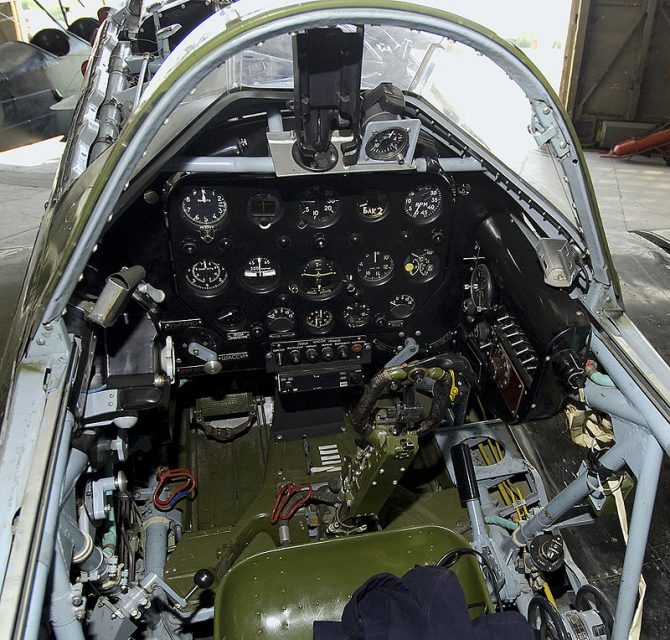
Based on its predecessor, the poorly performing MiG-1, the MiG-3 incorporated improvements to the wings, propeller, armor, and armament. It had better range, better firepower, and better protection for its pilot.
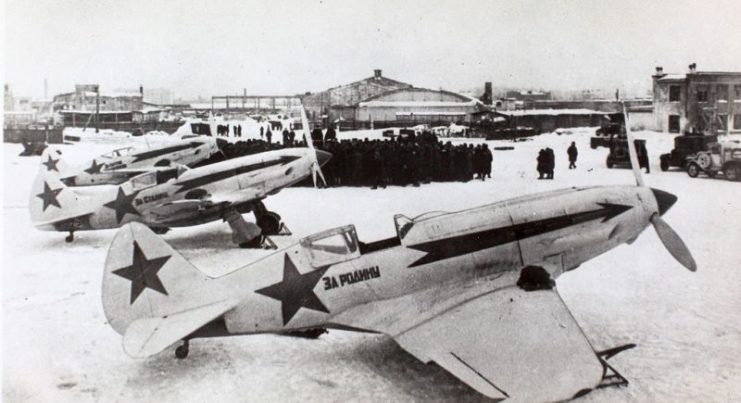
The MiG-3 still had some serious flaws. It was difficult to fly and performed relatively poorly below 5,000 feet (1,524 meters). But at high altitudes it came into its own, and its high speed gave Luftwaffe planes a real challenge.
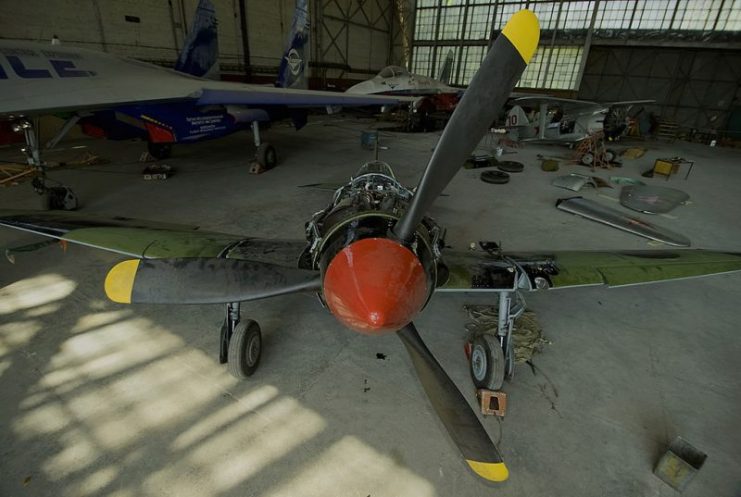
MiGs were withdrawn from front line combat in the winter of 1942-3 as they were being badly beaten by improved German planes. They were retained for close support and reconnaissance.
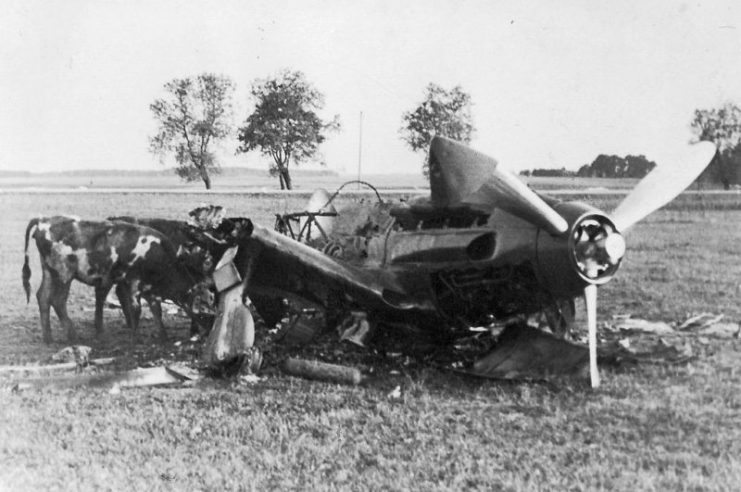
Petlyakov Pe-3
Developed from a dive-bomber which had itself been adapted from an interceptor, the Pe-3 was designed as a multi-role fighter. Only 23 were produced before the German invasion, at which point production of Pe-2 dive-bombers was altered so that half became Pe-3s.
The Pe-3 carried two cannons in its former bomb bay, one in the dorsal turret, and either two more cannons or two machine guns in the nose. Bristling with weaponry, it became a crucial part of the Soviet inventory early in the war, with around 300 taking to the skies.
Unlike most fighters of World War Two, the Pe-3 had twin engines mounted in the wings instead of a single engine in the body of the plane.
Polikarpov I-15
First flown in 1933, the Polikarpov I-15 biplane was one of the Soviet Union’s best inter-war planes. During the Spanish Civil War, it was exported to the Republican side and license-built in Spanish factories. There, it proved to be a tough fighter that performed well against enemy planes.
Thousands of I-15s were built. They were used by the Soviets against the Japanese and Finns, as well as being sent to China for use against Japan.
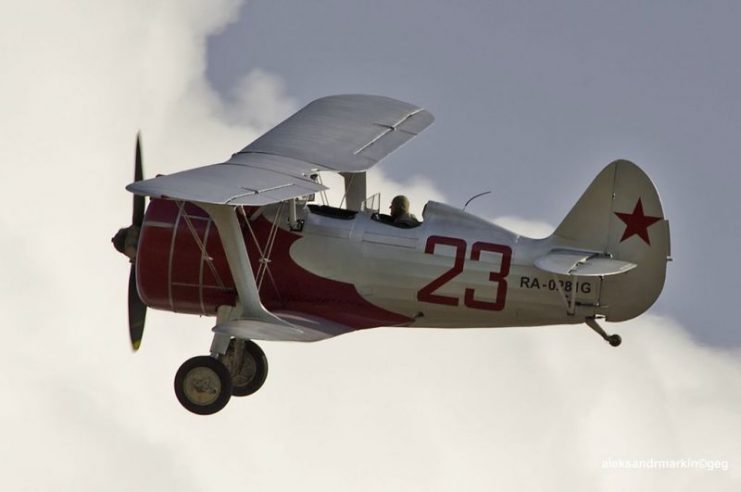
1,000 were still in use when the Germans invaded in 1941. By now, they were regularly being out-classed by enemy monoplanes, so were mostly used in ground attack operations. They were all pulled from the front line by late 1942.
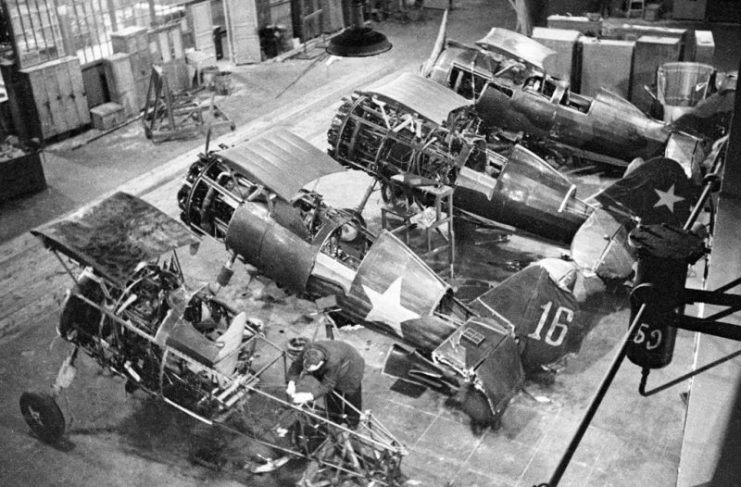
Polikarpov I-16
A contemporary of the I-15, the I-16 took to the air mere months after its sibling. A tiny monoplane with a wooden fuselage, it was one of the most innovative fighters of the early 1930s, though most of the world didn’t see this until the Spanish Civil War.
With a top speed that was 70mph (112 kph) faster than its peers, highly maneuverable, and equipped with four machine guns, it was a great fighter.
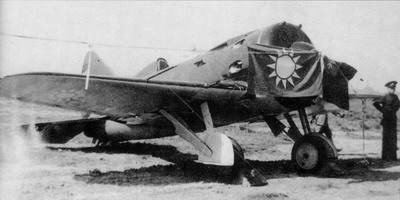
The I-16 had a similar career to the I-15. It made its mark in Spain, flown by both Spanish and Soviet pilots, before serving against the Japanese and Finns. Still in use in 1941, it was by then out of date and suffered heavy casualties when fighting Germany planes.
At times during the invasion, desperate Soviet pilots used these planes to ram their opponents rather than give in.
The I-16 was finally withdrawn from the front lines in 1943, long after it should have been.
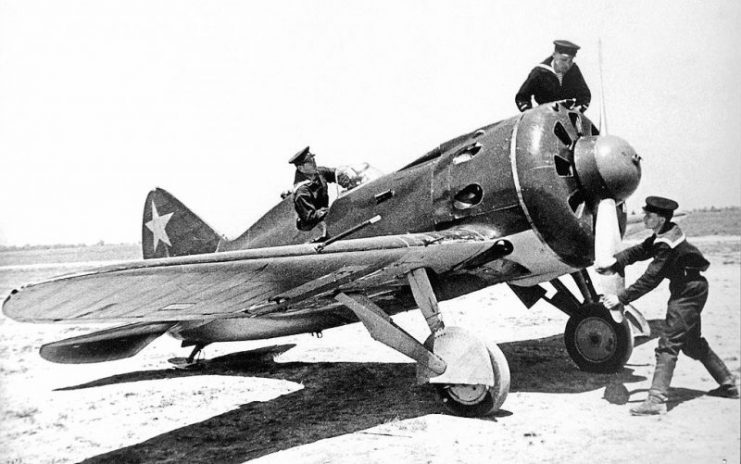
Yakovlev Yak-1
Originally designated the I-26, the Yak-1 was renamed during production. Only a few had been made by the time the Germans invaded, but it had been designed to be built as simply as possible and mass production now took off, with over 8,700 eventually built.
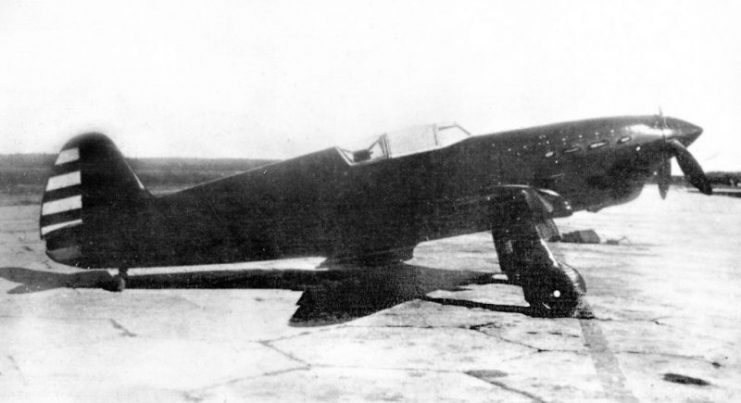
Relatively fast and agile, the Yak-1 could sometimes hold its own against the Messerschmitt Bf109. It helped the Russians to catch up with the capabilities of the Luftwaffe.
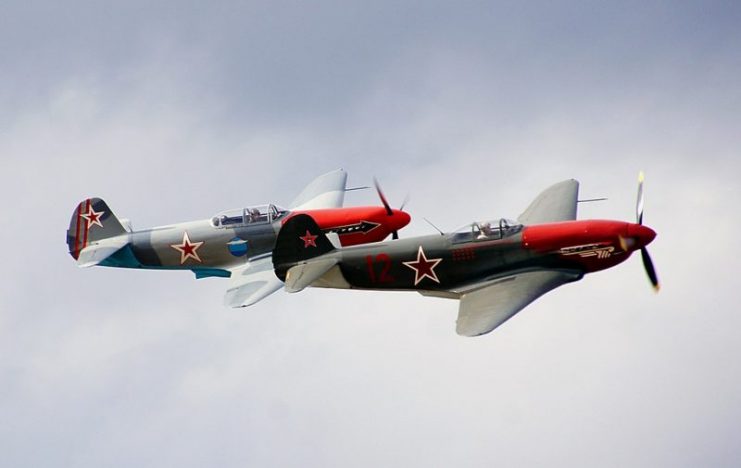
Yakovlev Yak-3
Developed from the Yak-1, the Yak-3 was faster, more maneuverable, and had an excellent rate of climb. It reached the front line in July 1944 and soon got into combat. That month, a flight of 18 Yak-3s defeated a force of 30 German fighters, killing 15 for only one loss.
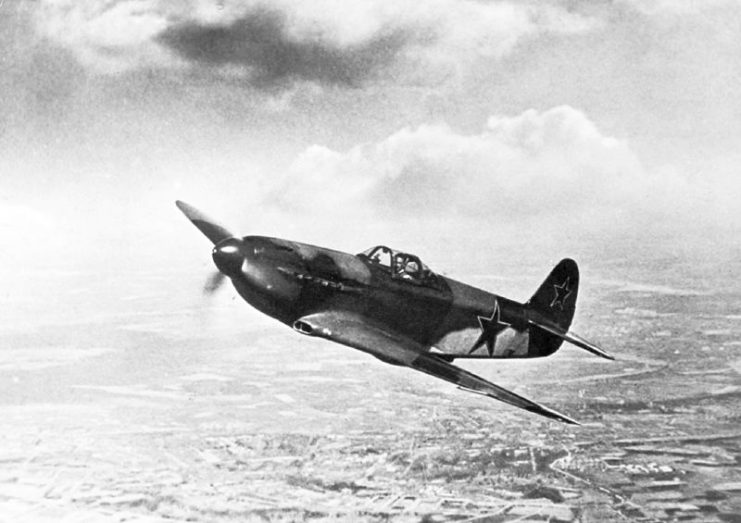
Equipped with cannons and machine guns, the Yak-3 was a deadly dogfighter that kept improving thanks to better engines.
Yakovlev Yak-9
Designed in parallel with the Yak-3, the Yak-9 entered production in October 1942 and so beat the Yak-3 into action. It was another success for this line of fighters, effective in combat and with an increasingly impressive range.
While keeping its shape, the construction of its body changed over time, using more aluminum to make it lighter and stronger.
Read another story from us: Great Fighters of WWII – Yak-3 and Yak-9 in Photos
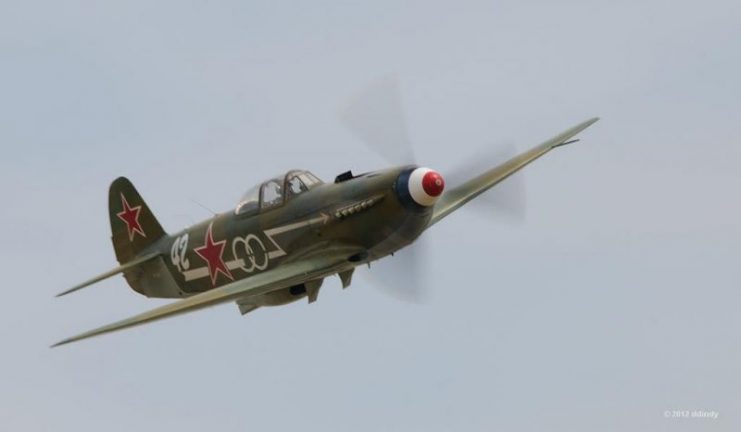
The Yak-9 was flown by Free French and Free Polish squadrons as well as Soviet pilots. It continued in use until the 1950s, when it was used in the Korean War.
